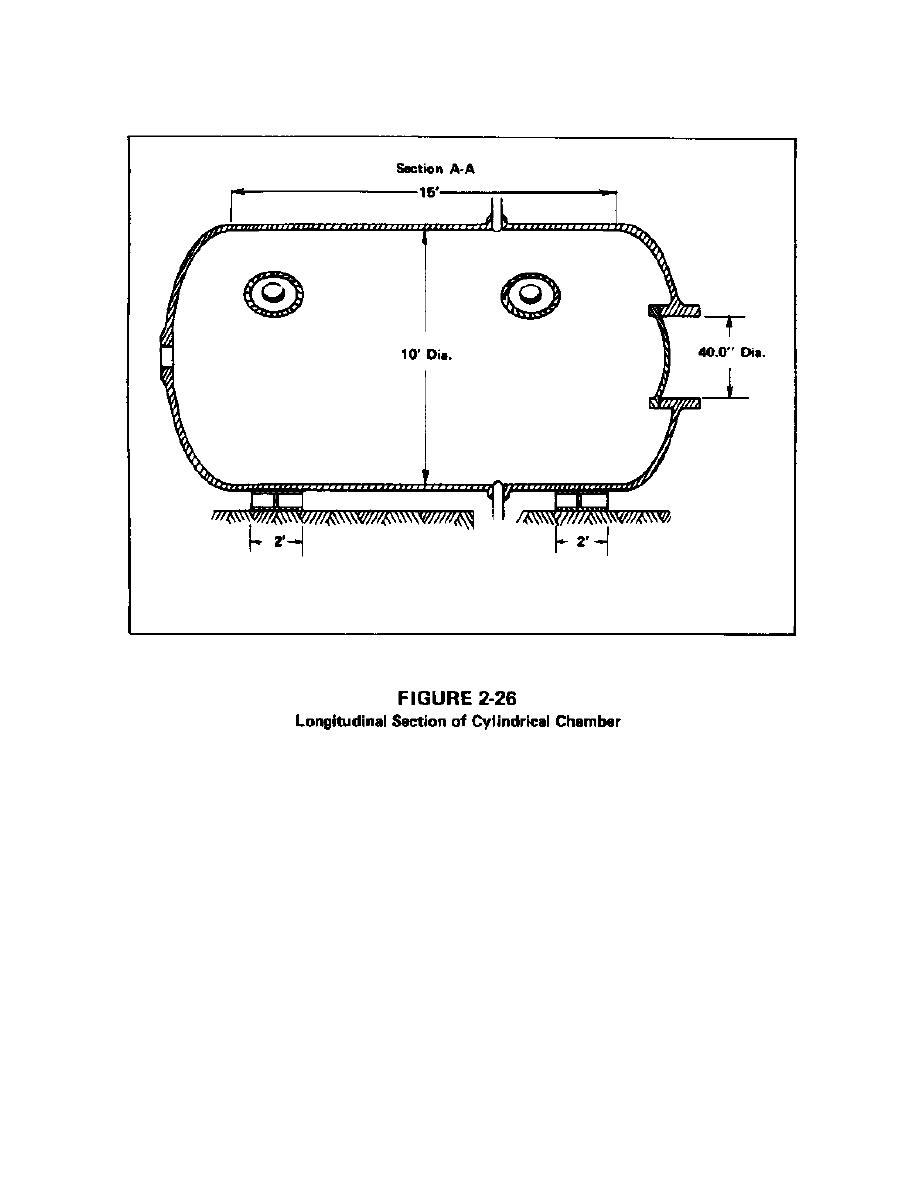
(3) Method of Analysis-Symmetric Problems. As in the previous
example, the computer program was used to analyze those portions of the
chamber that comprise bodies of revolution. The hatch end of the chamber is
shown modeled for input into the computer program in Figure 2-28. The 3,269
psi pressure shown acting on the hatch seating surface is the resultant of
the 1000 psi pressure acting over the area of the hatch. The computer output
for tresses in the cylinder and tori-spheroidal head are shown plotted in
Figure 2-29 (circumferential stress) and 2-30 (meridional stress). It is
apparent that large stresses are generated in the knuckle of the
tori-spherical head. It can be seen from Figure 2-30 that significant
compressive membrane stress occurs in the knuckle. It is unlikely that a
head such as this, designed to minimum code specifications, will buckle.
However, it is recommended that the designer check this possibility by using
the data presented by Eszttergar and Kraus (see Reference 27, Analysis and
Design of Ellipsoidal Pressure Vessel Heads, 1970), Adachi and Benicek (see
Reference 28, Buckling of Tori-spherical Shells Under Internal Pressure,
1964), and Thurston and Holston (see Reference 29, Buckling of Cylindrical


 Previous Page
Previous Page
